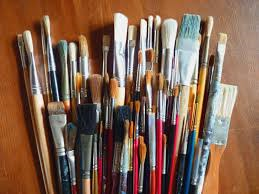From my experience of placement earlier this year I definitely noticed that the general opinion from my class was that maths was a boring subject and art was a fun subject. I done a few art lessons with my class and they were always fully engaged and were eager to do the work, I think this is because their teacher done a lot of art with them and her love of art passed on to the children. This is an example of how it is crucial for us as teachers to be enthusiastic about every curricular area we teach because it definitely reflects on the child’s opinion of a subject. Anyway, my class loved art and were really enthusiastic about it whereas maths they just got on with but they didn’t look forward to that part of the day. So in my class the children didn’t seem to link the two subjects together as they seemed to have an overall different opinion on them, however they didn’t realise just how much mathematics they were using – and to be honest neither did I.
Every little thing near enough links back to mathematics, this is when you realise just how much maths is literally everywhere. Here are some examples thinking back to my art lessons:
- Asking the children to collect 2 pieces of paper and 1 paint brush – they need to understand quantity and how to do basic counting.
- Asking the children to half their piece of paper – they have to understand the mathematical language of ‘half’ and how to do this.
- Drawing shapes – they need to have an understanding of different shapes and how to draw these.
- Working with a time limit – basic skills of how to tell the time and also how to manage their time.

- Writing the date on the back of their work.
- Working in pairs – understanding the language again, automatically knowing what a pair is.
These are just very basic examples of how the children and I used mathematics without even thinking it. These all link very closely with one of Liping Ma’s four properties – basic ideas. All the children in my class could do all of the above and understood what they were doing, but it all started when they were much younger learning the simple but powerful basic concepts and principles of mathematics. (Ma, page 122) When children grasp these basic concepts and principles such as simple equations, it then allows them to build on top of these foundations to then become more confident in mathematics and explore into much more challenging concepts. The fact that any child in my class could half a piece of paper or collect 2 paintbrushes highlights that they already have engraved in them the basic ideas within mathematics.
That is a simple example of how mathematics links with art – and to be honest any other subject area. Because like I said maths really is EVERYWHERE!
References
Ma, L. (2010) Knowing and teaching elementary mathematics. Teachers understanding of fundamental mathematics in China and the United States. Anniversary Edition. Routledge: New York.


